How to Cure a Plague
Scene One
A few days before the 2016 US presidential election, I sit in the Brooklyn Academy of Music, enjoying an escape. Ivo Van Hove’s Kings of War is in hour four of an almost five-hour march through Shakespeare’s Histories (from Henry V to Richard III). So far we’ve watched a rave, a couple of lethal injections, a procession of barnyard animals, and most of the audience is still perky.
I cop to loving Van Hove’s work primarily because it does feel like an escape. The soft-spoken Dutchman who netted a Tony for A View from the Bridge untethers classic works from context to create stories that feel less real than mythical.
To be sure, now is the time to champion new work, especially work by voices that are now in greater danger of being silenced. But as theatre companies nationwide prepare for 2017, what canonical work can we program immediately to keep the national conversation vibrant? What stories do we tell?
But hiding in the margins of this Shakespeare smorgasbord is something painfully of the moment. Before taking the crown, Richard of Gloucester sits at a table covered with big red phones. He picks one up (until now we’ve heard nothing but Dutch), and, with a grin, he purrs in plain English: “Barack? Are you there? It’s me—Richard the Third.”
Later, Richard faces down his sister-in-law, Elizabeth, needing her approval to marry her daughter. Elizabeth stands like a pillar in a pantsuit as Richard flails to get what he wants. When she exits, Shakespeare’s line for Richard is “relenting fool, and shallow, changing woman!” Richard says it. Then, to us, in English: “What a nasty woman!”
The tide of reactions that sweeps from the nosebleeds to the footlights is pure theatre. Somehow, for a moment, we all feel healed of something. I’m not fully sure what.
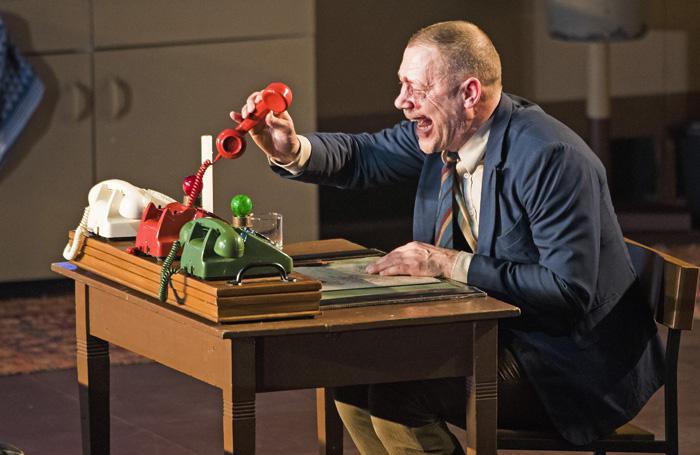
Scene Two
The air in New York City on Election Day stings with a familiar chill. The pruned digital feeds of gung-ho/peful artists firmly in the blue sing of inspiration and possibility. We are, it seems, going to win this thing. The chance of a crippling blow to our confidence and a seismic shift in our comfortable universe is a faraway flicker, not an encroaching blaze.
Then, as many of us watch that barometer on the New York Times website wobble from blue to red—I feel the life sucked out of our party, and I know the feeling. A reversal. The anagnorisis of Aristotle. It’s Greek—no, wait—it’s Russian. Chekhov Russian. This dawning, inexorable knowledge that something’s gone wrong that we were blind to is exactly how the residents of the Ranevskaya Estate feel in The Cherry Orchard’s third act when, in the midst of a fanciful fête to celebrate the good times, their home is bought out from under them by the man they least expect; a man who, though heinously wealthy, stands for an alienated working class that they’ve ignored.
What play written more than 100 years ago for a nation on the other side of the world could be so much for us? Chekhov, whose other career was as a physician, gave us our diagnosis a century ago.
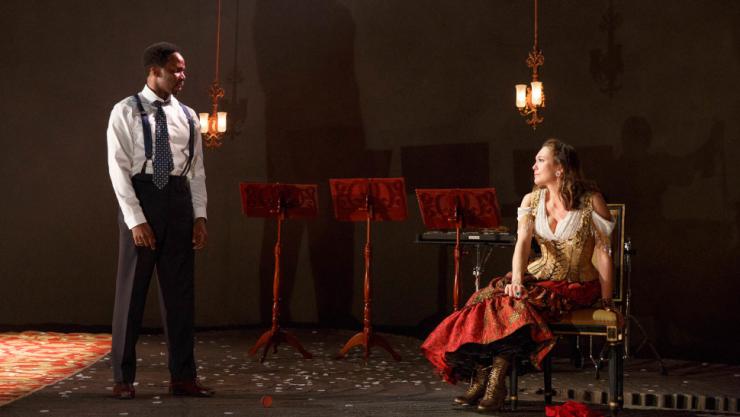
Scene Three
Under the rising sun of a Trump Administration, it feels like theatremakers have been given an ultimatum: justify your existence, or get off the stage.
An email sent out by The Pearl, a NYC theatre of the classical bent, makes an urgent bid for the relevance of their upcoming season, featuring a production at Ionesco’s Rhinoceros. Other companies append hurried changes to their season (I can name two that have hastily appended Richard III to their 2017 repertoire, perchance because of this article by Stephen Greenblatt). Frivolous productions left-turn their advertising to stress how necessary joy and escape will be. Plays running unavoidably gain or lose prescience in the wake of the storm. Voices already throng to the bar to make a case for theatre (see: Lyn Gardner’s Guardian article, American Theatre’s two-parter, and Jonathan Mandell’s on this very site), or propose their own Fantasy League of Plays for This Generation (see: articles by Michael Billington, Erik Piepenburg, and Teju Cole).
And I need not even mention the Hamilton-Pence Affair. Small-scale skirmishes at the stagedoor are prefigured in history—in the 1829 Astor Place Riots, Nixon’s meddling with the film of 1776, and a violent protest of one of Brecht’s early premieres by a certain fledgling “alt-right” party in Weimar Germany.
Theatre has never not been a conduit for civic need, never not had ten fingers on the pulse of events. To be sure, now is the time to champion new work, especially work by voices that are now in greater danger of being silenced. But as theatre companies nationwide prepare for 2017, what canonical work can we program immediately to keep the national conversation vibrant? What stories do we tell?
Sean Graney, when adapting the works of Sophocles, called his marathon of Greek misery These Seven Sicknesses. The common thread he wove through the plays is disease: curses, violence, and death hanging over us like plague. Greece, for Sophocles, is sick. And the catharsis of theatre is the cure.
I suggest there are three necessary steps to engage with a sickness, and a litany of titles to accompany each step.
My purpose is merely medicinal: these plays and countless others now sit on the doctor’s table awaiting use. The delicate choice we have is to determine what stories we will tell as a nation.
Diagnosis
Plays that ask where did the problem come from? How is the disease spread, who spreads it, who isn’t in danger yet, who’s immune?
Here Chekhov, Gorky (The Lower Depths, Children of the Sun), Boucicoult’s Poor of New York. Plays that fruitfully make use of a removed setting to read the entrails: Caryl Churchill’s Vinegar Tom, David Edgar’s Destiny, droves of Miller (Crucible, Incident at Vichy, Broken Glass), Nilo Cruz’s Anna in the Tropics, Luis Valdez’s Zoot Suit, Albee’s Death of Bessie Smith, Kushner’s Bright Room Called Day and Kushner and Tesori’s Caroline, or Change. Here too are those painful, allegorical Fascism Plays: Brecht’s Resistable Rise of Arturo Ui, Ionesco’s Rhinoceros and The Lesson, Kander and Ebb’s Cabaret.
Prognosis
Plays that ask what has the problem led to and what will happen if we don’t fix it?
Here are the rough-hewn Brits: Mark Ravenhill’s The Cut, David Hare’s Pravda and Gethsemane, Pinter’s Mountain Language, Simon Stephens’ Motortown, and doubtless Osborne’s Look Back in Anger. Here absurd netherworlds that reflect our own back at us with a painful smile: McDonagh’s Pillowman, Genet’s The Balcony, Jarry’s Ubu Roi. Here are the plays of some of the greatest social changers, of Athol Fugard (Blood Knot, Master Harold…and the Boys) and Václav Havel (the Vaněk plays).
Here, too, is a host of works that, in their time, spoke daringly to a specific case made freshly germane. Plays that tap into 2016’s brand of race tension (Douglar Turner Ward’s Day of Absence, William Hamilton’s White Chocolate); plays about class angst and stratification (Lisa D’Amour’s Detroit, Naomi Wallace’s One Flea Spare, Maria Irene Fornes’ Mud); about refugees (Naomi Iizuka’s Anonymous); police brutality (Kia Corthron’s Force Continuum); abortion (Suzan-Lori Parks’ Fucking A); global catastrophe (Anne Washburn’s Mr. Burns); and more.
Treatment
Plays that ask How do we cure the problem (or at least treat it)? A cure proposed: a drug, an herbal remedy, a shot in the arm. Or euthanasia.
Here are Lysistrata and Antigone (and Anouilh’s Antigone, and a battalion of other Antigones). Here is Brecht and Odets, some Stoppard and the rest of Kushner. Cri de coeurs of despair or anger, from Amiri Baraka’s Dutchman to Sarah Kane’s Cleansed. But also plays that prescribe hope, few as they are, like Peter Barnes’ Red Noses, Jose Rivera’s Marisol, Ahrens’ and Flaherty’s Ragtime.
There are fewer plays, you may note, in that last category. Cures don’t come easy.
Now, nothing here is definitive, or even accurate in any scholarly sense. Many of these works defy my pat categorization. Any given production might awaken in a play its hidden relevance, or reveal its obsolescence. This assemblage of titles is only the tip of an iceberg. Maybe you’ll be the one to stage O’Neill’s The Hairy Ape as the quintessential twenty-first century text about toxic masculinity and class disenfranchisement.
My purpose is merely medicinal: these plays and countless others now sit on the doctor’s table awaiting use. The delicate choice we have is to determine what stories we will tell as a nation.
At day’s end, some sicknesses are incurable. There are poisons that have no tidy antidote. These days I count myself as one of the anxious, wracked by bleak visions (prescription: 700mg Beckett), but my solace has been seeing how this plague was felt and dealt with by our predecessors. Theatre has seldom if ever cured the disease of a whole nation—but it has helped.

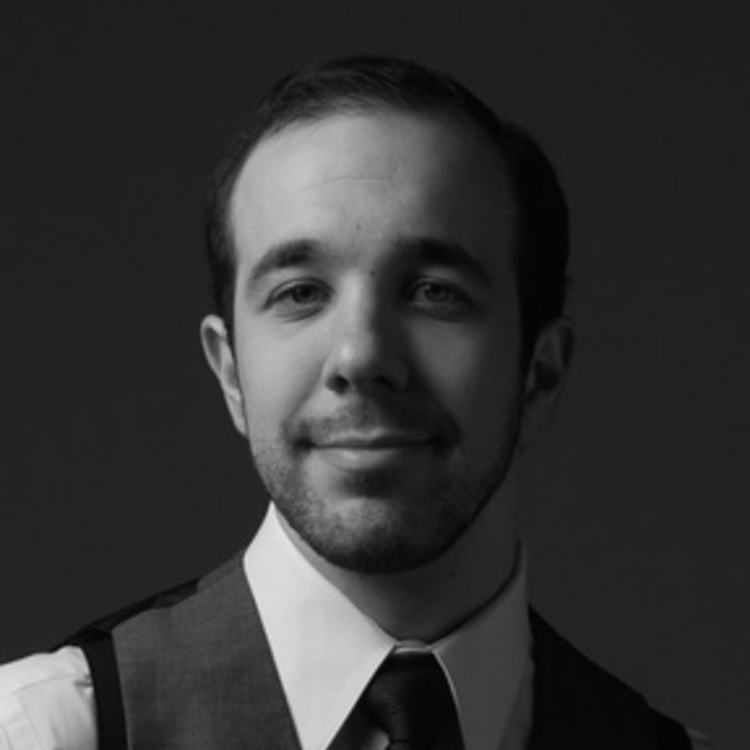
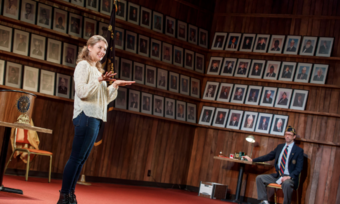

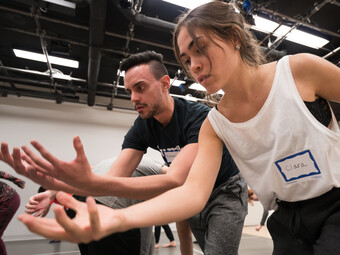


Comments
The article is just the start of the conversation—we want to know what you think about this subject, too! HowlRound is a space for knowledge-sharing, and we welcome spirited, thoughtful, and on-topic dialogue. Find our full comments policy here